If Rex Tillerson’s tenure as Secretary of State is coming soon to an abrupt end, it is critical that his successor continue to prioritize Department of State reform. Today, State’s mission is unclear, leading to overlap and duplication with other agencies as well as confusion among the rank-and-file. Any reform effort should begin by answering the question: “what is State uniquely qualified to do?”
A report commissioned by the department and published in June revealed that “the people of the Department lack clarity and alignment on that which is the mission of the organization.” The confusion is understandable given the number of U.S. agencies currently operating overseas.
For decades, traditionally domestic-focused federal agencies and the Department of Defense have steadily expanded their roles, both in making foreign policy and representing the US abroad, supplanting State’s traditional leadership. The June report stated, “employees report that there is very little work that State does, particularly in international locations, where there is not a host of other governmental agencies and entities involved.” The loss of so much bureaucratic turf has left State struggling to find its footing.
Unfortunately for State, its time of exclusive domain over matters of diplomacy is over. Those unwilling to acknowledge the agency’s decline have defensively declared that State serves “as the diplomatic arm of the U.S. government” or that the Secretary of State “ensures the coherence of U.S. foreign policy.”[1] Today, most agencies operating overseas conduct their own diplomacy, and few would argue that there is a coherence to U.S. foreign policy.
Perhaps no agency has supplanted State’s role as thoroughly as the Department of Defense. Defense regularly conducts its own foreign policy, engaging directly with foreign governments. For example, in Europe the military’s United States European Command (EUCOM) has its own relationships with its European and NATO counterparts, completely independent of State. Defense has also made inroads into State’s control of so-called “security assistance”—a broad term for funding that can be used for anything from humanitarian and disaster assistance to foreign institutional capacity building to infrastructure construction.
A 2011 Stimson Center report estimated that Defense controls approximately 60 percent of all security assistance funds (up from 25 percent in 2002). In practice, Defense controls closer to 100 percent since even those funds appropriated State are often passed over to Defense for management and expenditure with little or no oversight by State. Even in the field of public diplomacy, Defense’s massive investments in “strategic communication” dwarf what State can produce.
From a policymaking perspective, the enormous expansion in power of the National Security Council (NSC) has come at State’s expense. In the last two decades, the NSC increased its role in foreign policy implementation and directly inserted itself into the minutiae of interagency squabbles. In a congressional hearing on NSC expansion last year, the Chairman of the House Committee on Foreign Affairs stated that the NSC’s “traditional role of ‘honest broker’ has evolved to a policy-making role—it has even undertaken secret diplomatic negotiations;” according to a 2016 report by the Atlantic Council, “the NSC has become a small foreign ministry.”
Domestic agencies have also increased their visibility overseas. There are now six major departments and agencies that work on business and trade promotion, leaving little or no room for State.
Congress has done a great deal to push State aside. In 1979, the Foreign Commercial Service was pulled out of the State Department and folded into the Department of Commerce. In 1998, the United States Information Agency (USIA) was dissolved; some elements were folded into State but the broadcasting elements like the Voice of America and Radio Free Europe-Radio Liberty (RFE/RL) were placed into a new independent agency—the Broadcasting Board of Governors (BBG).
A very public feud between State and USAID over control of development assistance policy has been playing out since at least the Clinton administration. Successive presidents have sought without success to reduce the duplication of effort and redundancy between the two agencies by suggesting USAID be consolidated into State. Meanwhile new development agencies have been created (e.g. the Millennium Challenge Corporation) and existing agencies have expanded into the development space (e.g. Peace Corps).
After the president’s executive order in March on reorganizing federal agencies, there was hope that reform at State would jump start, spurring the kind of mission rethink that the department has avoided in the last two Quadrennial Diplomacy and Development Reviews. Undoubtedly, there are some policy matters that State should regain control over, and Congress should help in that effort by clarifying lanes of authority. But elsewhere, other agencies may be better positioned to lead and State should cede ground. Identifying State’s comparative advantage is critical.
Unfortunately, Secretary Tillerson’s efforts to reform the State Department have amounted to very little thus far. Many believe Tillerson’s “redesign” effort is causing more harm than good, but prematurely ending any reform initiative will be just as damaging to the department in the long run. The department must clarify and narrow its mission before it starts moving offices and functions on an organizational chart. Congress and the foreign policy community should push Tillerson’s successor to fulfill the president’s reorganization mandate.
[1] Adams, G., & Murray, S. K. (2014). Mission creep: The militarization of US foreign policy? (p. 138). Washington, DC: Georgetown University Press.
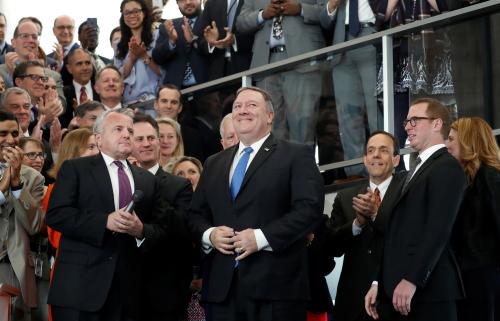
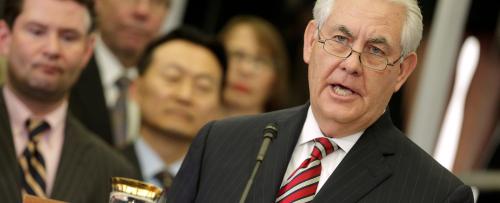
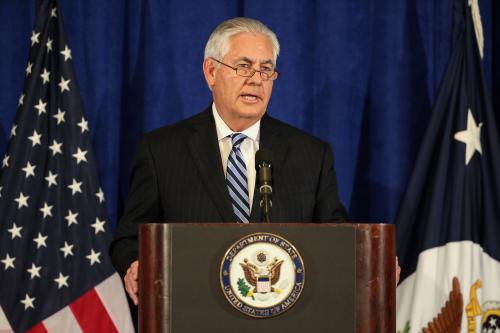
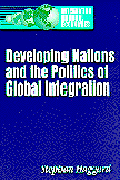
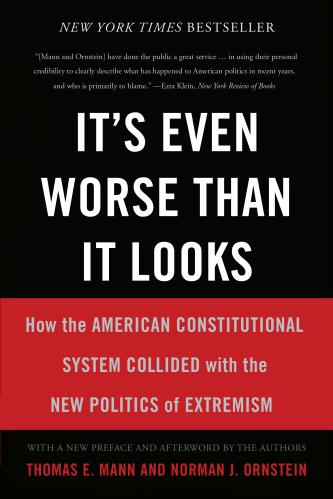
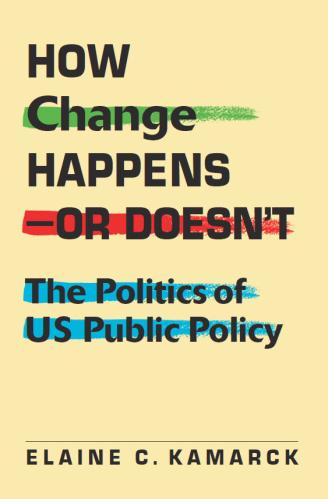



Commentary
Don’t let Tillerson’s departure kill State Department reform
December 21, 2017